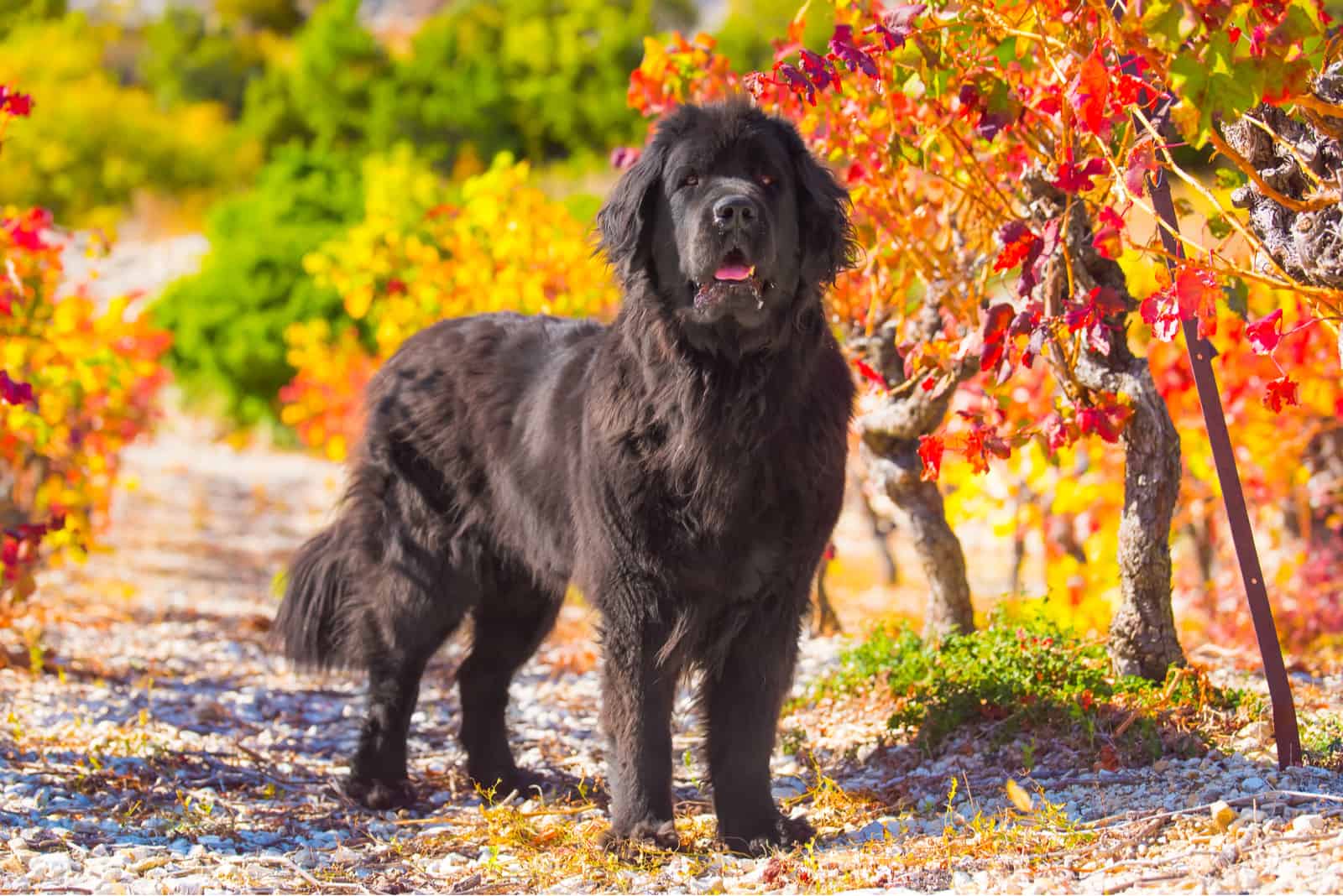Today is a very special day because we are going to talk about a very special breed that steals everyone’s hearts – the Newfoundland dog breed.
If you’re a Newfie lover, you probably already know that there are more than three standard Newfoundland dog colors.
The Newfoundland breed is a giant breed that can weigh up to a whopping 150 pounds. Not only is a Newf a heavy dog, but it also reaches up to 28 inches in height.
Besides its weight and height, what we all find remarkable about the Newfoundland dog is its rich, water-resistant coat.
Water-resistant, you say?
Yep, our beloved Newfie was primarily bred in Canada as a retriever and a top-quality working dog. Also known as the Canadian retriever, the Newfie‘s job was to jump into the water and retrieve whatever needed to be retrieved. Even today, Newfies make great lifeguards, effortlessly participating in water rescues.
This is why the Newfie’s double coat was designed to keep it afloat, but also keep the Newfie warm in cold water and cold climates.
Already a big dog, the Newfie’s fuzzy double coat makes it look even bigger! But, Newfies are just big lap dogs really.
How many colors do Newfoundlands have?
According to the American Kennel Club, standard Newfie coat colors are solid colors, meaning there are no patterns, dots, markings, or speckles. As such, most Newfoundland dogs are black, brown, or gray.
However, there’s more to Newfoundland colors than you might first think!
Let’s find out the answer!
Standard Newfoundland Colors
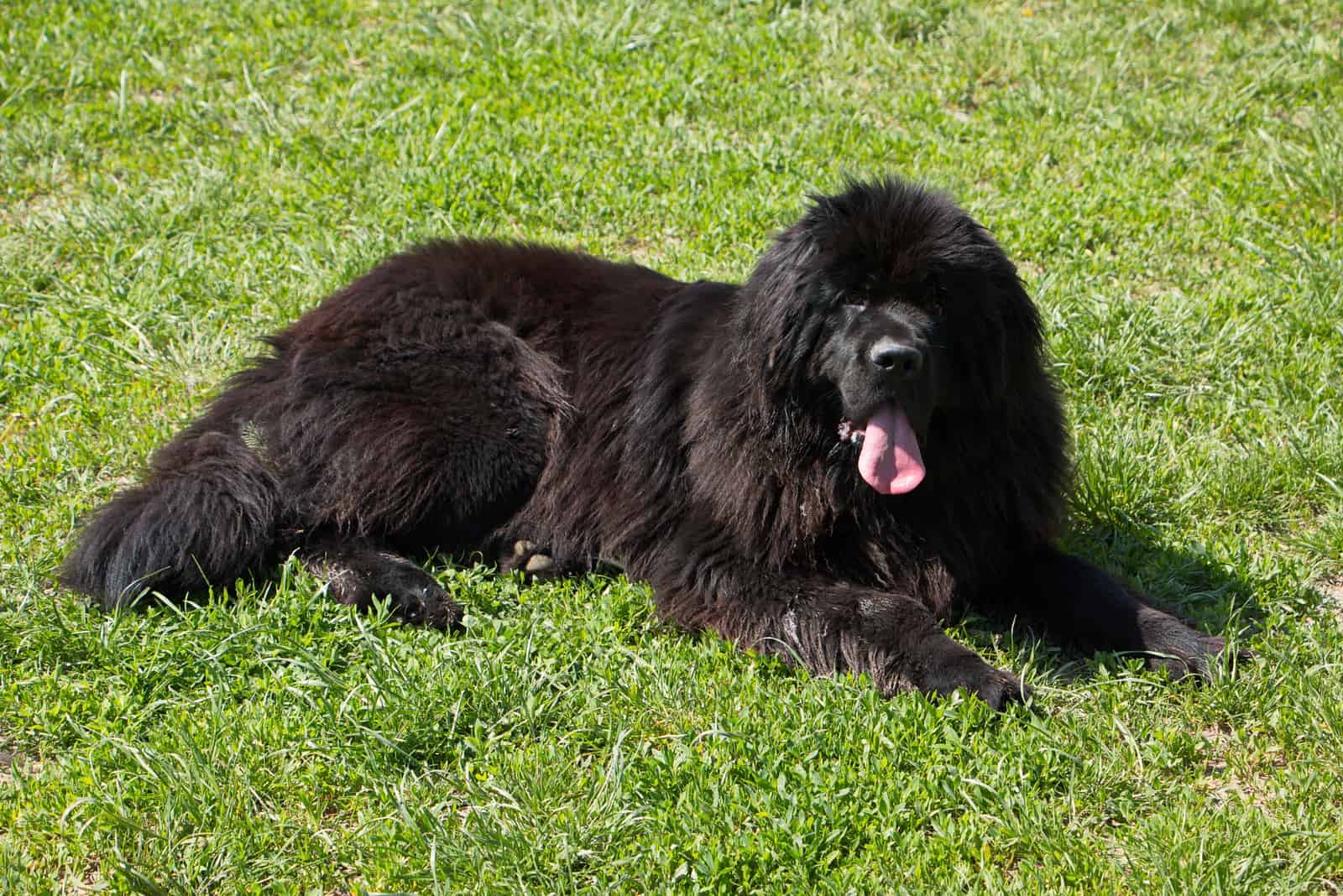
Due to the fact that the Newfoundland dog breed is registered by the American Kennel Club (AKC), there are some breed standards that they must adhere to. In addition to their body features, size, and coat length, the AKC also focuses on stating the standard coat colors of the Newfoundland dog.
Are Newfies always black?
Although we’ve got used to seeing black Newfoundland dogs, Newfies actually come in a variety of other coat colors, each cuter than the previous!
These are so-called “accepted colors,” meaning that most reputable Newfie breeders will stick to breeding black, brown, or gray Newfs. When prospective dog owners search for a white Newfoundland dog, most breeders suggest going for a Great Pyrenees, even though it’s a whole other dog breed.
Now, when it comes to the Newfoundland Club Of America, they recognize a Newfie that is white and black color as a breed standard.
Even though you rarely see a black and white Newfoundland, they do exist and are some of the most gorgeous dogs in the canine world. But, we will get to that later.
First, let’s describe the standard Newfoundland coat colors.
1. Black Newfoundland Dog
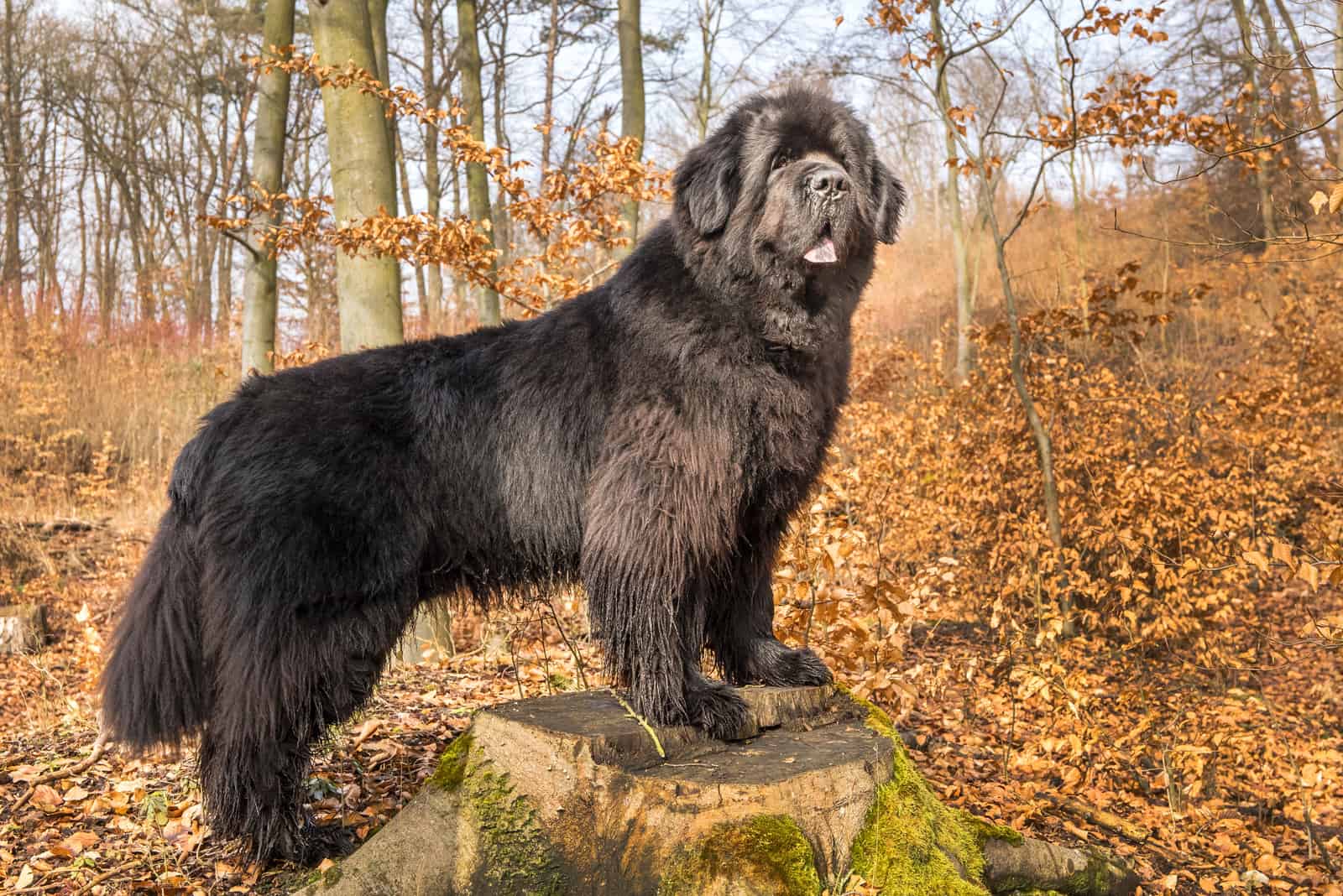
First, we have the classic black Newfie. A gentle giant with a solid black mane. Both its outer coat and its undercoat are black, but they can range in hue.
The black color covers the entire body of the Newfoundland dog. However, the black Newfoundland dog’s fur may also have a light brown tint to it.
A solid black coat has become the main feature of the Newfoundland dog. Not only does it look cool and mighty, but it looks and feels soft to touch, making the Newfie a great cuddle companion.
White markings may appear on some body parts, like on the tip of the tail, across the chest, and across the toes. Sometimes, black Newfies look as if they are wearing white socks!
Here’s the catch about these white markings – as the black Newfie ages, those white markings seem to fade.
For example, if your Newfoundland puppy has a large white marking across its abdomen or on its chest, it will eventually fade away when the Newfie pup becomes an adult.
Interesting, isn’t it?
2. Brown Newfoundland Dog
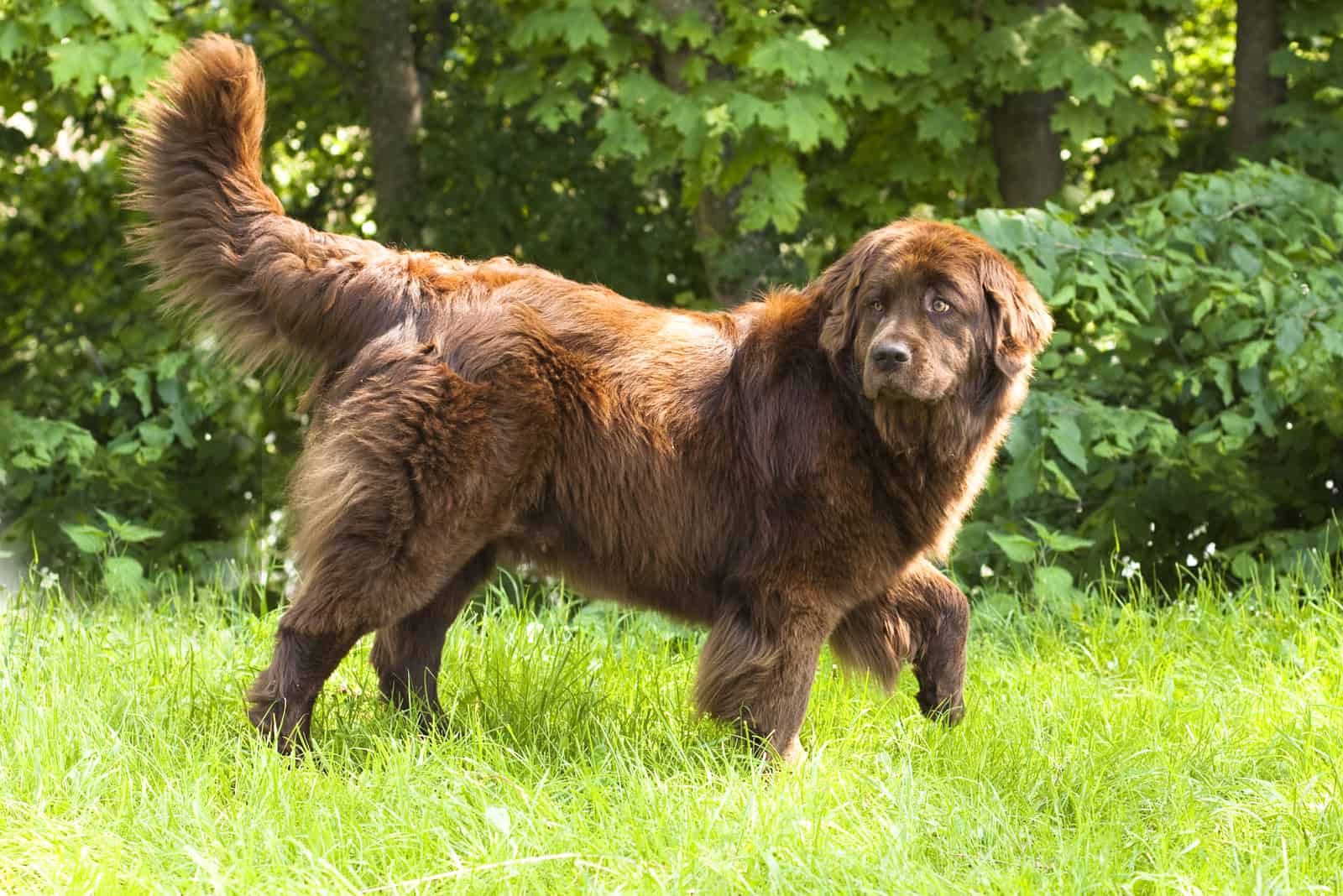
I don’t know about you, but brown Newfoundland dogs are my favorite! Brown Newfies look like cuddly bears!
Brown Newfies actually come in two different brown color shades: bronze and dark brown (chocolate).
Their brown coat comes in a solid color that resembles fine chocolate! This is what the Newfoundland breed’s signature hue looks like.
Besides different hues, the brown coat color of the Newfoundland dog is tinted with brighter or darker brown stripes. The brown Newfoundland dog’s fur is as evenly distributed as its black fur. This brilliant hue disperses evenly.
Just like we see in a black Newfoundland puppy, the brown Newfoundland can inherit white markings across specific areas of its body. I should state though that these white markings are not as solid as the overall brown coat color. Such white markings are noticed on the lower jaw, toes, and the tip of the tail.
It’s important to mention where these white markings on the Newfie’s body are located. If you’re searching for a show-quality Newfie, it might get disqualified if there are white markings on any other (not mentioned above) places on the body.
There is no way you can walk by unnoticed when you have a brown Newfie walking by your side!
Its striking chocolate color steals the spotlight — the Brown Newfoundland dog is a true beauty and sight to behold!
3. Gray Newfoundland Dog
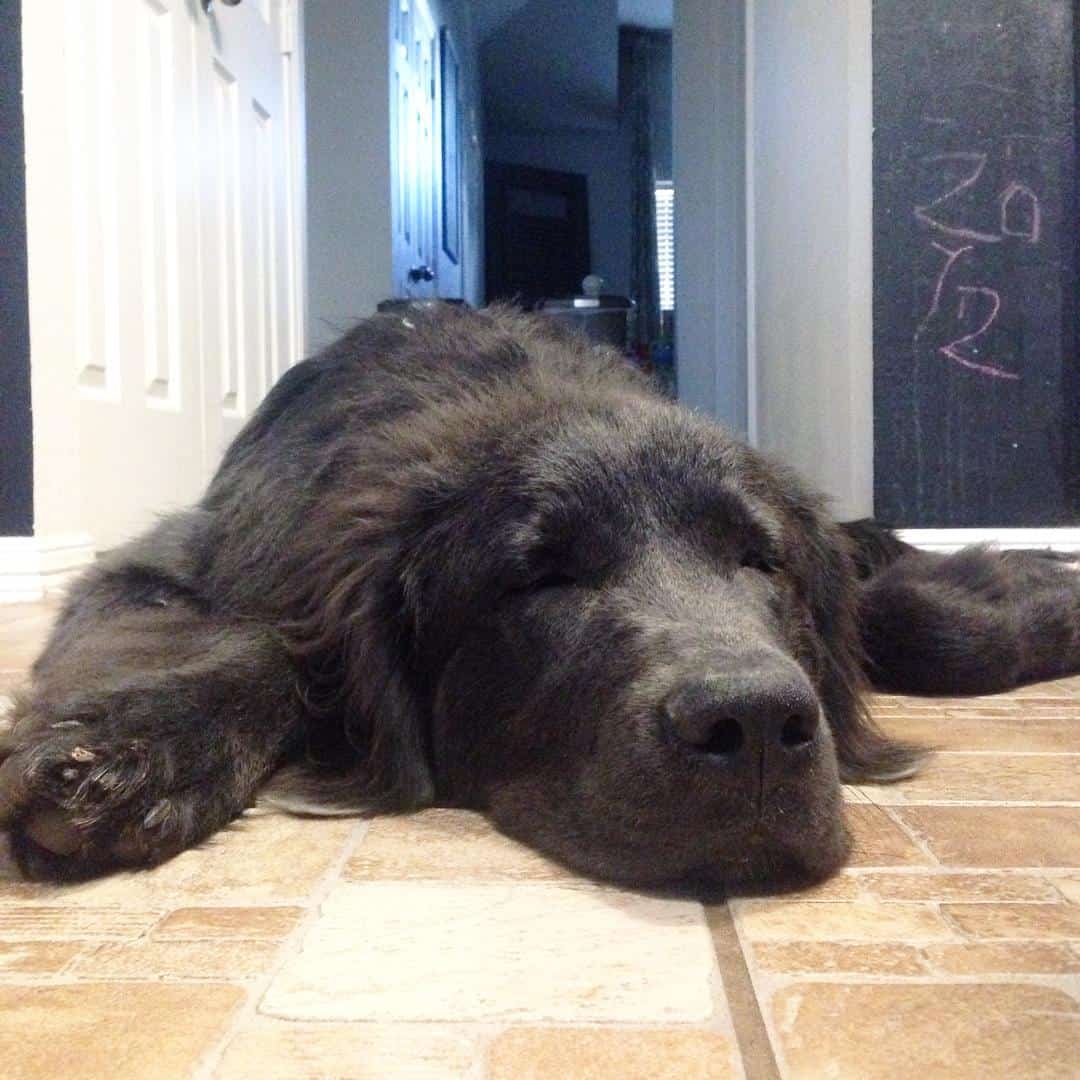
Photo from:@maythegraynewf
One of the least frequent color variations is definitely this one. Gray Newfoundland dogs are actually black Newfoundlands with a diluted coat that gives off their gray-ish appearance. The gray Newfoundland is so beautiful, and I’m glad that the AKC recognizes this coat color.
However, gray Newfies might not be easily found in places other than the United States. This is because they are not popular in FCI member countries. Surprisingly, gray Newfies cost less than brown and black Newfies.
An interesting fact, and something we don’t see everyday, is that the magnificent coat of the Gray Newfoundland frequently sports a hint of bronze.
The thing about gray-colored dogs is that they are usually associated with blue dog syndrome (color dilution alopecia). Some believe that gray Newfoundland dogs inherit skin and coat problems.
But, I beg to differ. Gray Newfies are among the healthiest dogs that I have had the chance to work with.
4. The Landseer Newfoundland
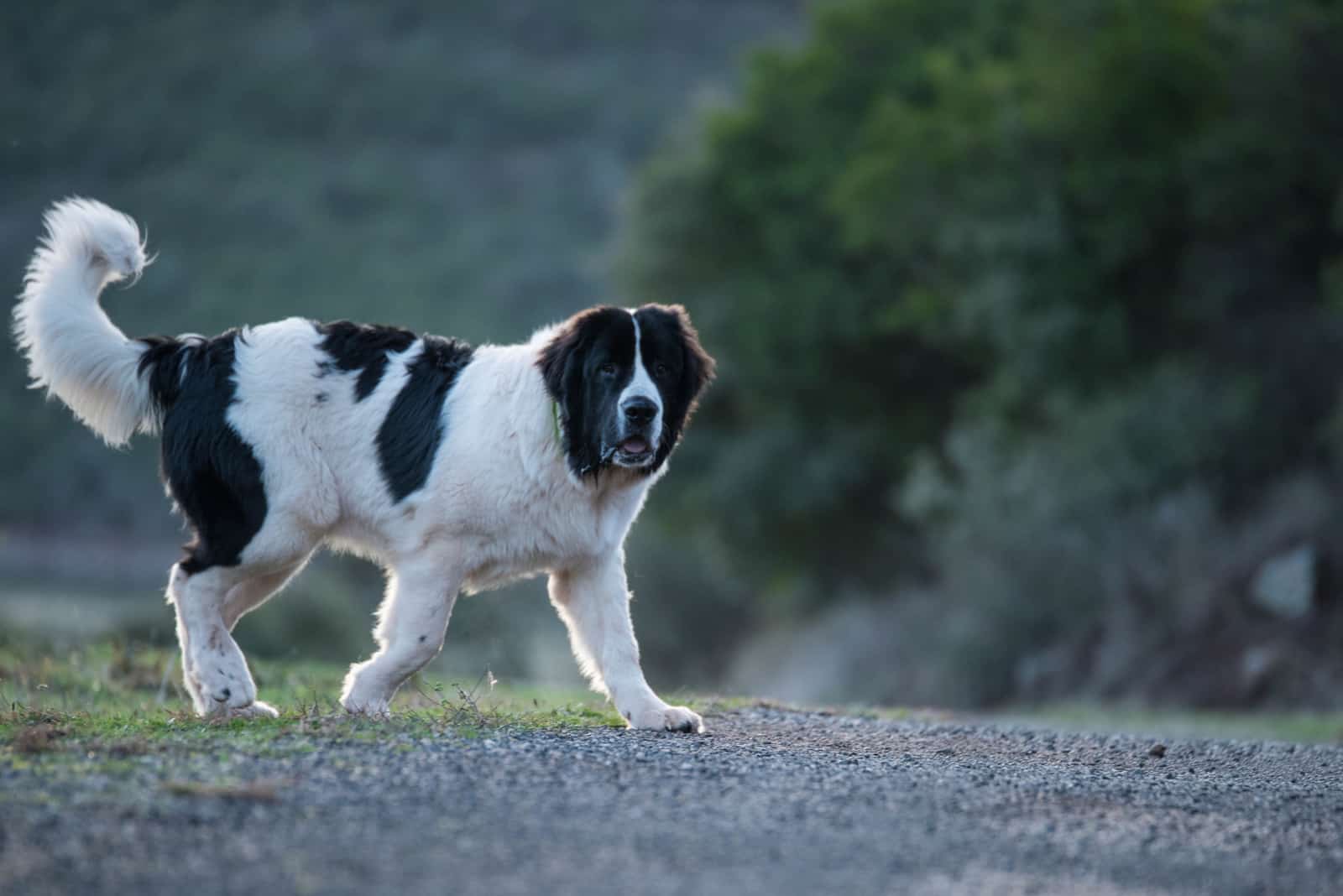
While the Landseer Newfoundland hasn’t found its way into the AKC breed standards, it has most certainly found its place in the Canadian Kennel Club’s standards. The official Landseer Newfoundland is a black and white Newfoundland. A total cutie with the most adorable puppy eyes, the Landseer Newfoundland inherits black markings on its white colored muzzle.
The Landseer Newfoundland is usually white with black markings. With its back and neck tinted in black, the Landseer Newfie is an interesting pup to observe.
These black and white markings are all over their body, so some may have found themselves on the tip of tails, while some may rest on top of the Newfie’s head.
While it is possible to find Newfoundland dogs that are solid black with white markings, we usually only see White Newfoundlands with a lot of black markings.
Other Newfoundland Coat Colors And Patterns
1. Irish Spotted Newfoundland
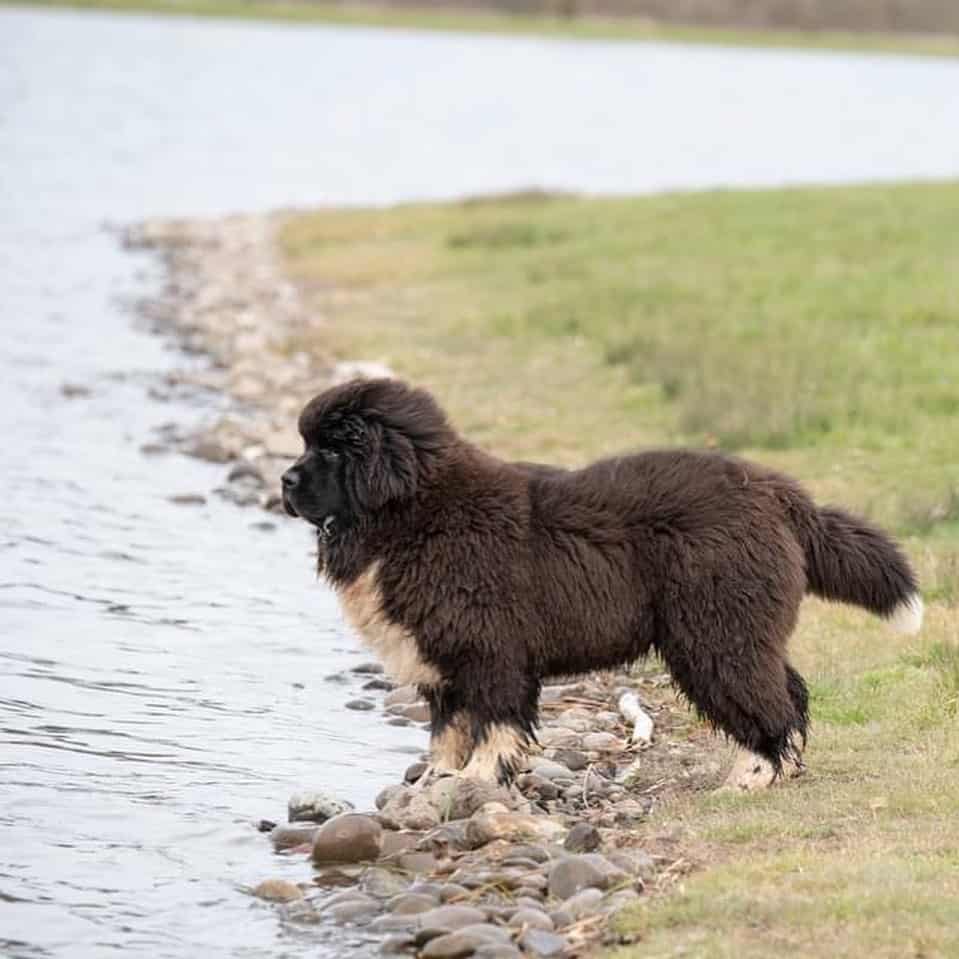
Photo from:@nottabearnewfoundlands
We previously mentioned that it is possible to find a solid black Newfoundland with white markings. That’s what we call an Irish Spotted Newfoundland puppy. This large dog has markings that are white chunks.
We’re not talking spots, dots, and speckles. I mean, yes, it is called the Irish “Spotted”, but the white markings across its solid black coat appear wider and bigger than typical spots.
Although the Irish Spotted is not an official color, nor is it even considered a “color“, Newfie lovers use this term to describe their wonderful black and white water dogs.
2. Beige Newfoundland
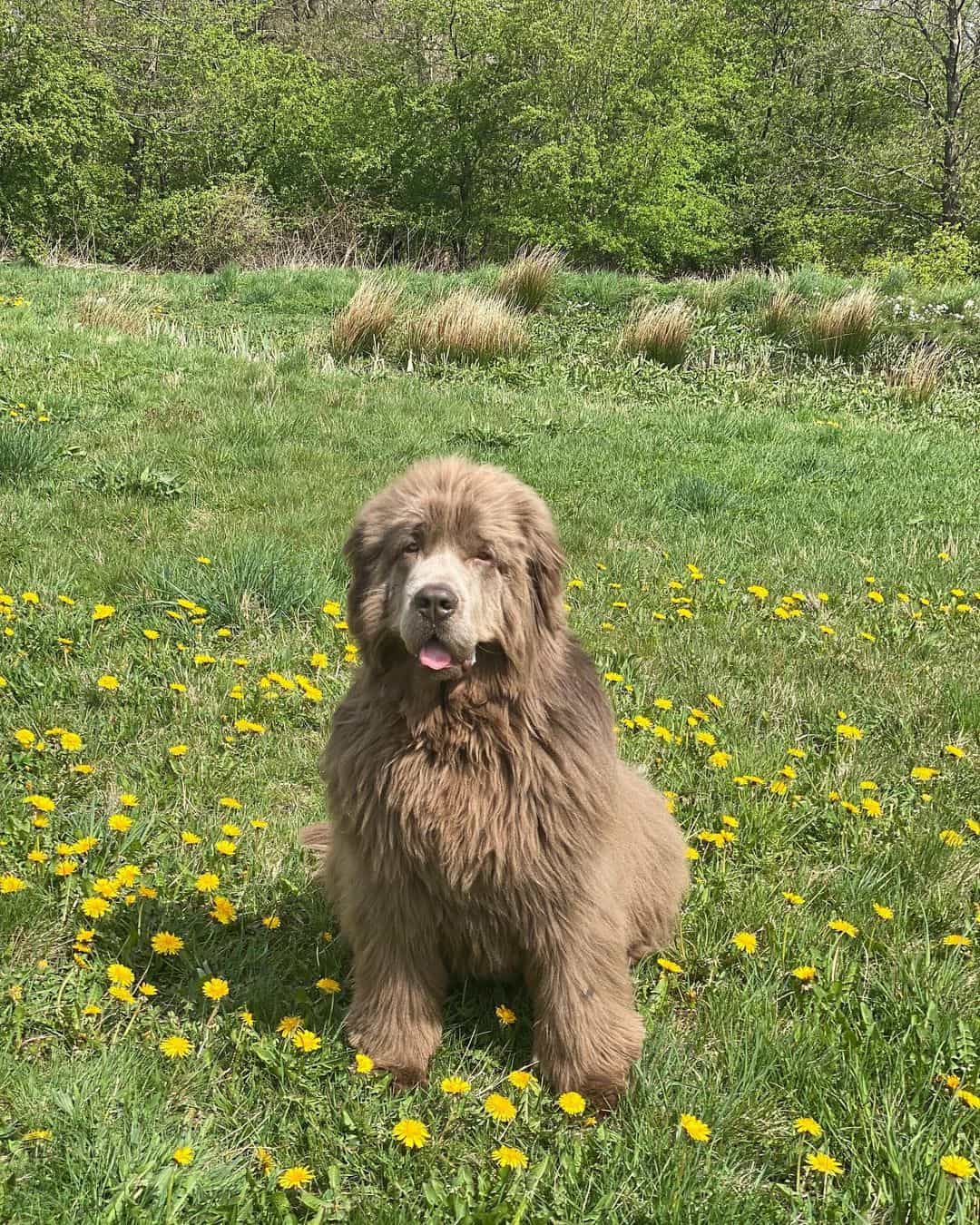
Photo from:@teddythenewfie_swe_
The beige Newfie isn’t listed on any Kennel Club’s breed standards, as it is not an official color. However, it resembles the brown Newfoundland the most.
When out in the sun, the beige Newfoundland may show unique hues of gray colors. The beige Newfie exhibits a very shiny double coat, with lots of hair around its neck area.
3. Gray And White Newfoundland
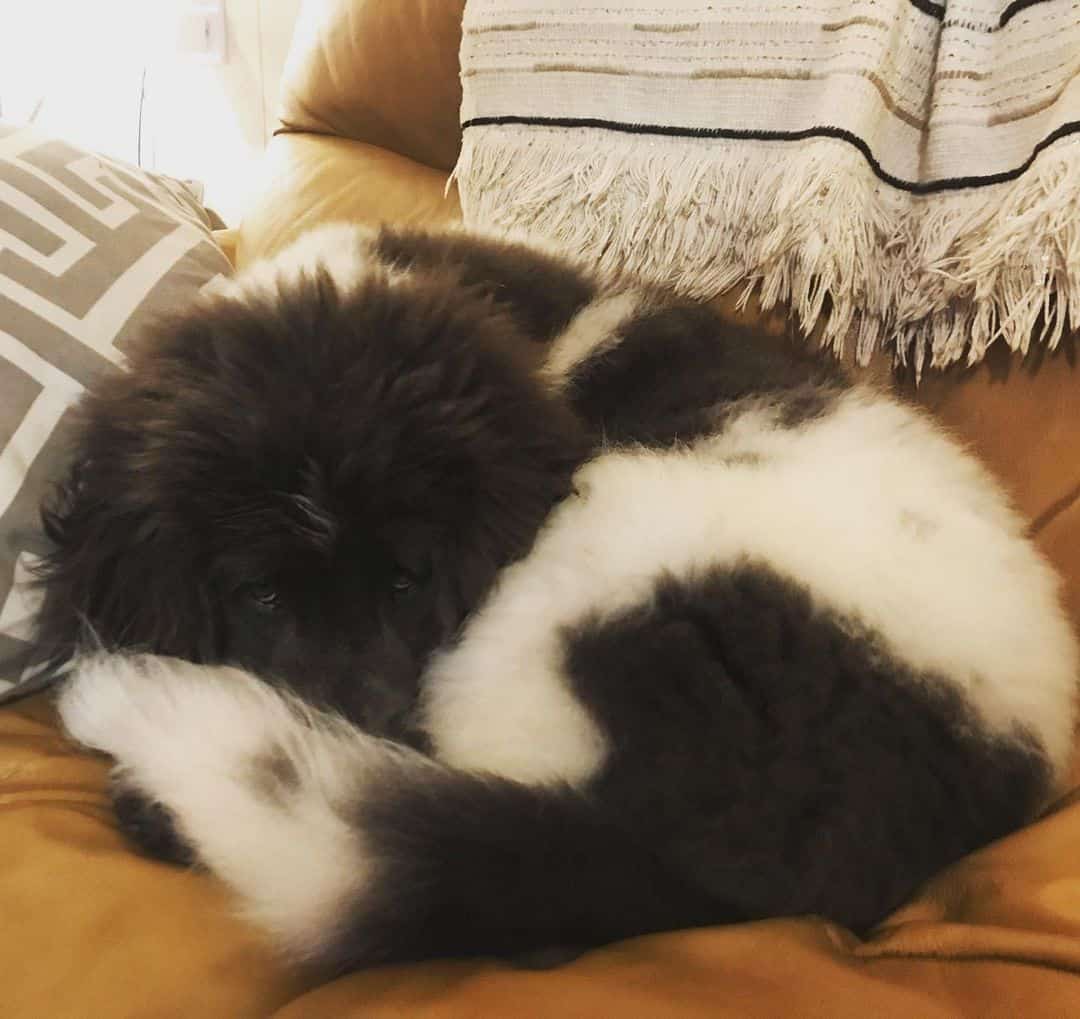
Photo from:@happymoosethenewf
The gray and white Newfie is not your average fluffy dog. Its chest is usually colored in a wide white marking, while its back is covered with a light gray hue.
The gray Newfoundland often has dark gray spots on its white legs. The toes and muzzles of the gray Newfoundland are usually colored in white, with their snouts being solid black. Sometimes, dark gray to black spots are located around the snout.
As for its adorable puppy eyes, the gray and white Newfoundland is famous for inheriting a gray to blue eye color. A truly mesmerizing pooch!
4. White And Brown Newfoundland
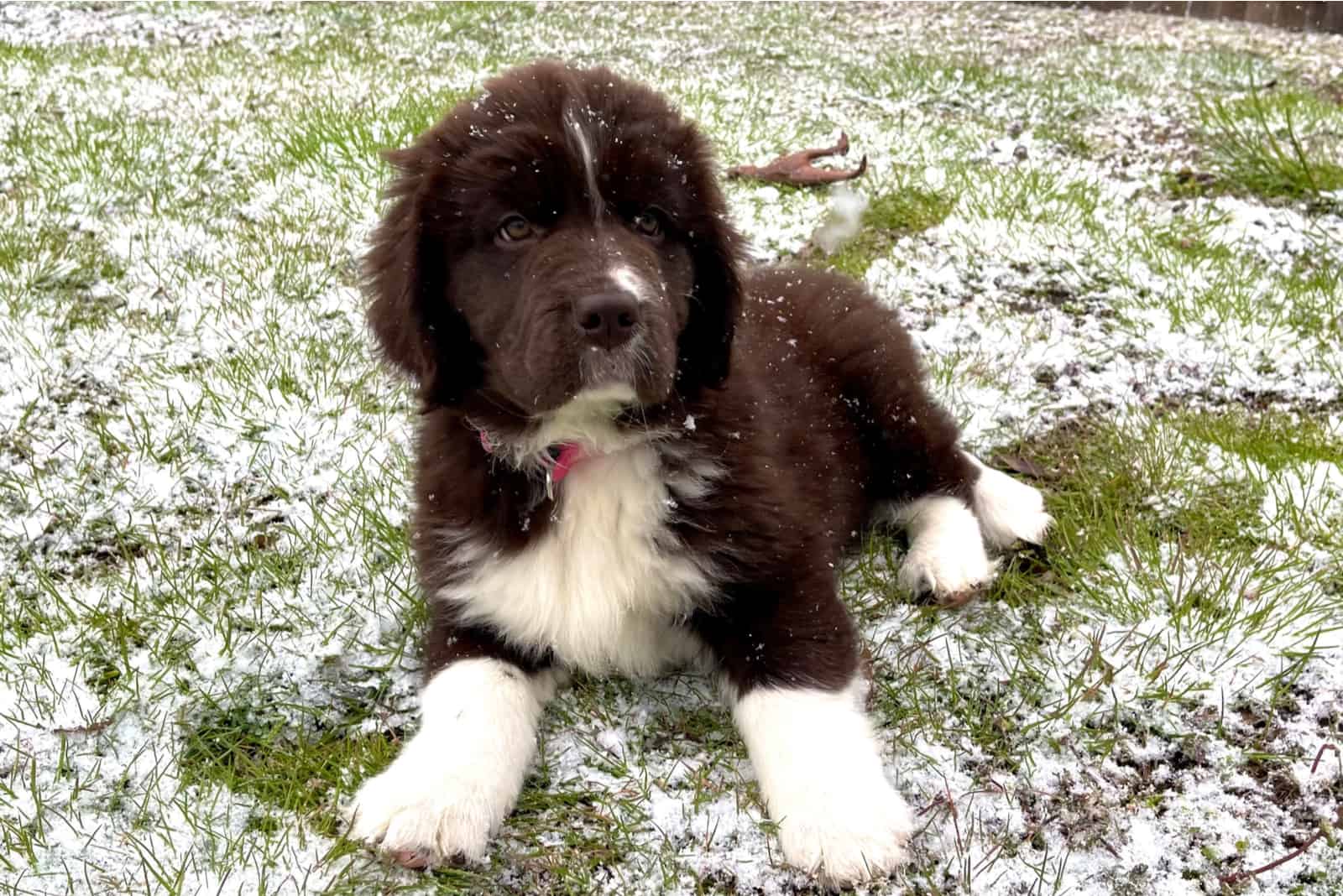
White and Brown Newfoundlands are similar to gray and white ones. Except, their coats are covered with light to dark brown markings. A white and brown Newfoundland is most likely to inherit a thin, white colored line that spreads from its black nose right up to its forehead.
Besides that, the white and brown Newfoundland usually has white-colored legs. The white coloring of the coat on its legs spreads from their knees downwards.
What’s special about this characteristic is that many brown spots and markings are found across its legs. The white and brown Newfoundland is a combination of beautiful patterns and markings!
5. Black And Tan Newfoundland
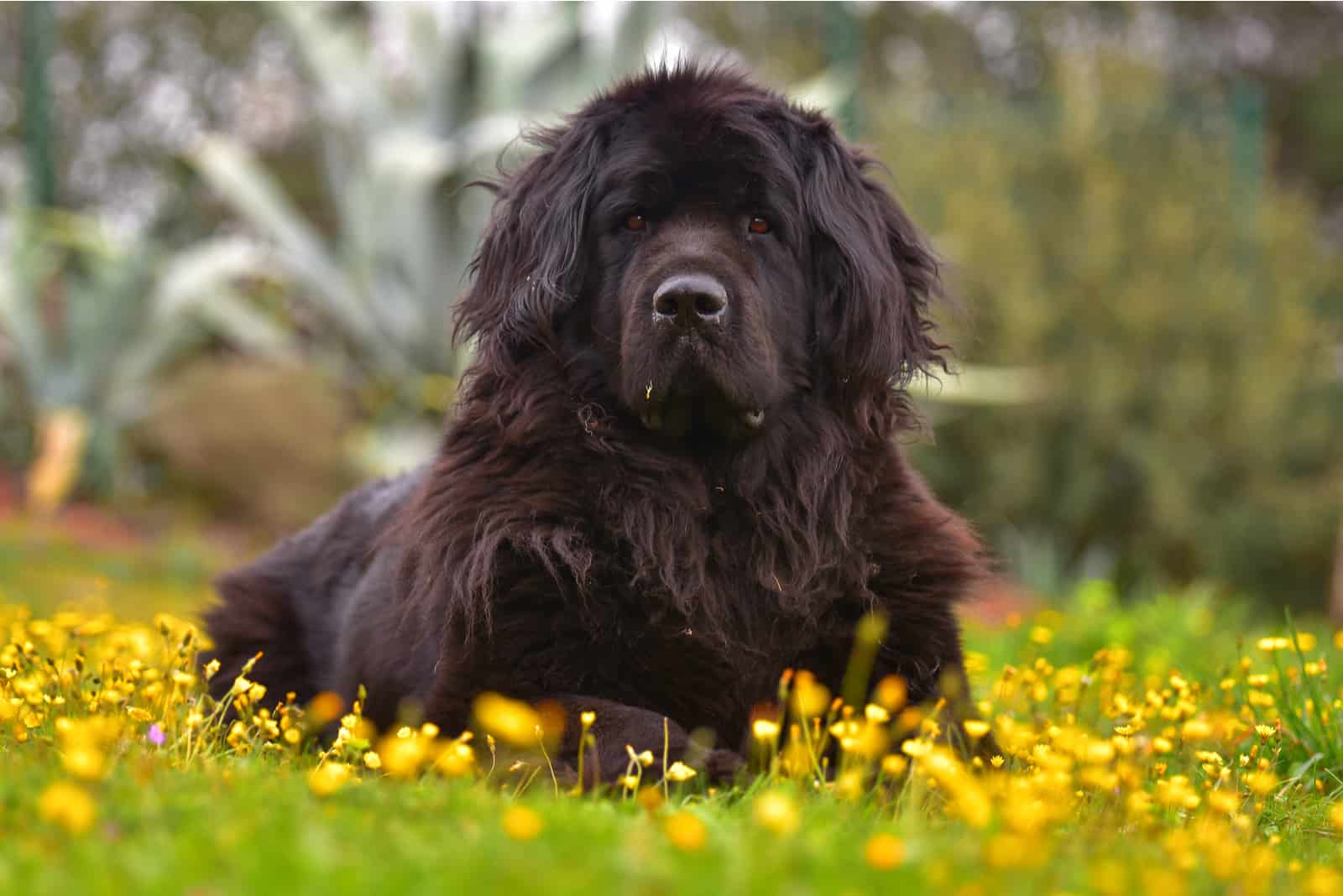
If you think that the gray Newfoundland is rare, take a look at the black and tan Newfie. It seriously reminds me of a giant, fuzzy Rottweiler!
The black and tan Newfoundland often inherits tan coat colored dots that are located slightly above its eyes. Its feet, paws, and a portion of its chest is also colored in tan color variants. Sometimes, there’s a distinct white marking across its tanned chest.
Even though these tan markings are distributed similarly to the Rottweiler or the Doberman Pinscher, the black and tan Newfoundland can inherit tanned pigment on different body parts too.
For example, a black and tan Newfoundland may inherit a tanned tip of tail, black colored face and legs, with tan shades across its back. It all depends on the dominant and recessive Newfie color genes!
Newfoundland Coat Maintenance
Deciding on a fluffy dog with a double coat, such as the Newfie, is a very bold move! With both an undercoat and an overcoat, the Newfie is a fluffy beast that is a bit difficult to maintain.
Due to the fact that the Newfie’s coat is water-resistant too, baths could take some time. Before bathing a Newfie, owners must brush its thick coat thoroughly. I can’t even begin to describe the amount of hair that will come out of that brush! Newfie owners could start knitting sweaters from all the loose Newfie hair!
Jokes aside, the Newfoundland is an extreme shredder! You know how Huskies blow their coats and all the chunks of undercoat float around the air? It’s the same with the Newfoundland dog, except there’s more hair.
Our beloved Newfie sheds twice a year. But, the season where most of the undercoat falls out is spring. Well, it’s quite understandable. After a long winter, this fluffy water dog has to prepare for spring and summer — time to take off the double coat sweater!
Alongside their coat care, you might also want to carry a tissue with you all the time because the Newfoundland drools loads! In fact, if the area around its mouth is always moist, there may be changes in coat consistency and color present under or around the mouth.
Owning a big fluffy dog breed means that you have to spend some time maintaining the fabulous fluff!
Newfoundland Health Problems
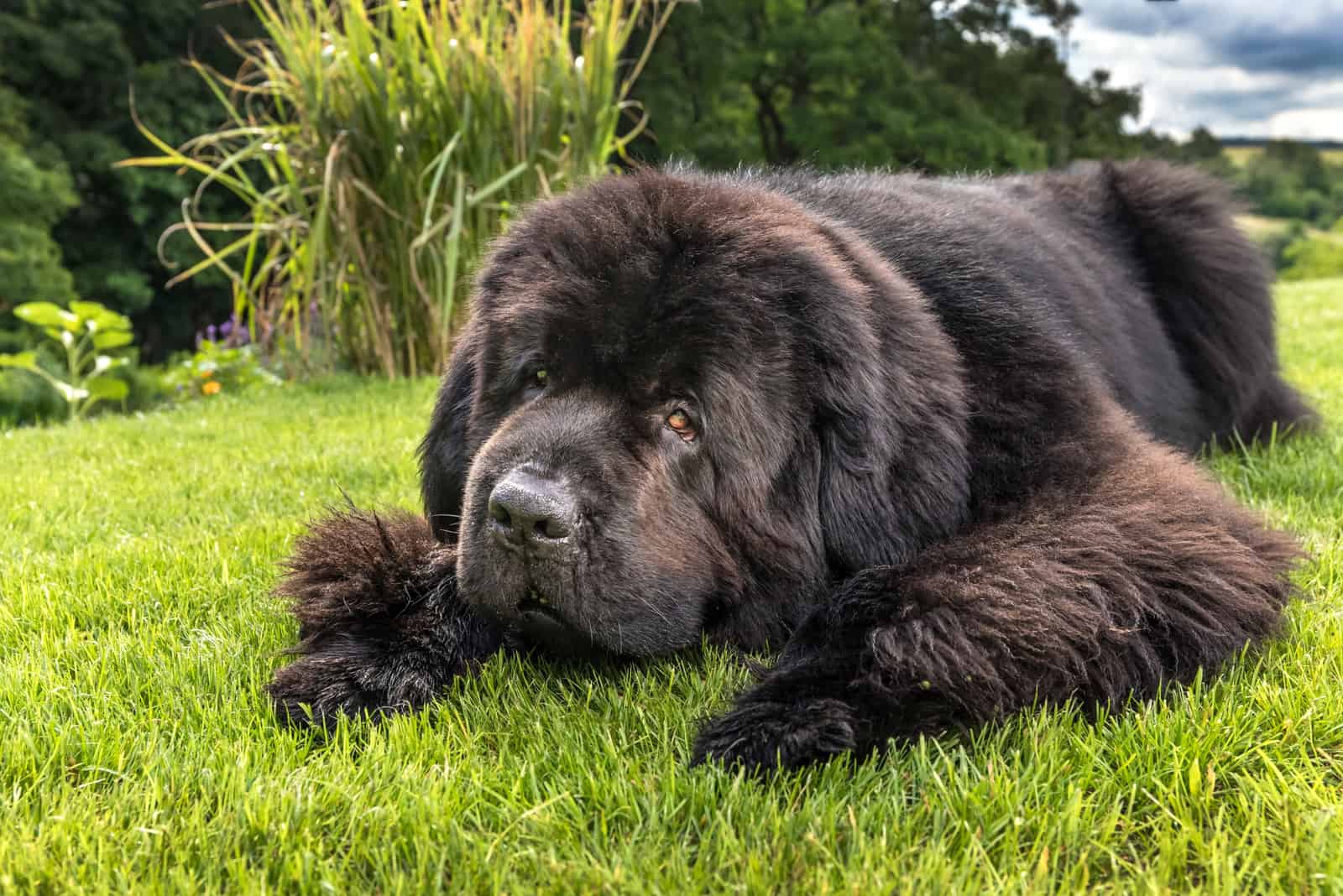
By looking at the Newfoundland growth chart, we can get a clearer picture of how quick and how big this dog actually grows. Due to the fact that the Newfoundland dog grows to be very large in a short period of time, it is very prone to developmental health problems.
There are a number of Newfie health problems and I could go on for days naming them. Besides common congenital health problems, such as hip dysplasia and cataracts, Newfies’ coats may be affected by some underlying health problems.
To make it easier, here’s a list of the most common Newfoundland health concerns that affect its gorgeous coat:
• Hypothyroidism
• Allergies
• Hives
• Autoimmune disorders
• Demodex mange
• Cancer
• Flea infestations
As you may assume, the Newfoundland dog’s lifespan isn’t greatly affected by these health problems. But, its thick double coat can be.
Ectoparasites, like fleas and mange, can cause a Newfie pup to develop a rash from all the obsessive scratching. Whenever it swings its big paw on the affected area of the body, the Newfie can potentially rip off its own fur.
Besides these common health issues, a big part of maintaining a healthy Newfie coat lies in its environment and nutrition. If the environment is too moist or too dry, a Newfie’s coat significantly worsens. A Newfie’s skin can become dry and flaky, while its dry coat can lose its density.
While many Newfie health problems can be prevented, some just develop on their own, making a Newfie’s lifespan shorter than other breeds’.
The next thing to do after choosing a reputable Newfoundland breeder, is providing your new Newfie pup with everything they need – from proper health care to delicious food.
To help maintain your Newfoundland’s health, a proper upbringing, followed by regular veterinary check-ups, is the way to go. High-quality dog food that is mixed with a raw diet can help boost a Newfie’s immune system, which results in healthy skin and coats.
After all, a good diet means a healthy and shiny Newfie coat! Learn more on this dog’s nutrition in our Newfoundland feeding chart.
Newfoundland Dog Fun Facts
Before the conclusion, I have prepared a few interesting facts about the Newfoundland dog breed that will definitely keep you thinking about this gentle giant.
• The Newfoundland dog breed is very popular in folktales, artworks, songs, and stories. You may be surprised to know that the Newfie dog from J.M. Barrie’s Peter Pan, named Nana, became a representative for this large dog breed. In fact, some paw lovers call the entire Newfoundland breed “Nana” because of its soundness, gentleness, and kind nature.
• Another Newfoundland dog that has left its paw prints on the world is Boatswain. Boatswain was a Newfie owned by the English poet, Lord Byron, and the two had an incredible connection. When Boatswain died, Byron made a huge monument and “an epitaph to a dog”, a beautiful poem about the Newfoundland dog he loved and cared for.
• Newfies inherit webbed feet! Not only are their paws big, but they have specialized, web-like tissue between their toes. These specific traits help Newfies swim towards a rescue! Despite their big size, they paddle through water effortlessly.
• Newfoundlands are giant dogs that are convinced that they are small dogs. Almost every Newfie acts as a lap dog! I mean, try handling a 150 pound Newfie in your lap!
Final Thoughts
Reading all of these facts only shows how huge of an impact these large dogs have on their owners. Many Newfie owners agree that they haven’t met a better dog than the Newfoundland.
Its soundness, gentleness, and kind yet goofy nature make the Newfoundland a perfect canine companion, with lots of empathy and dedication. Oh, and if you didn’t know, Newfies make wonderful nannies. They are great with children!
Taking into consideration the Newfie’s health problems and short lifespan, maintaining a healthy Newfie diet is crucial.
A Newfoundland’s coat color, consistency, and thickness depend on its diet. Feeding your Newfie with dog food that is full of omega fatty acids, combined with quality protein and carbs, is a good start to a fabulous Newfie coat color!
Related Content
• Labrador Colors: The Pinwheel of Colors and Markings
• Bullmastiff Colors: A Handy Guide To Bullmastiff Coat Colors
• Saint Bernard Colors Explained: Fun Patterns You Didn’t Know Existed
